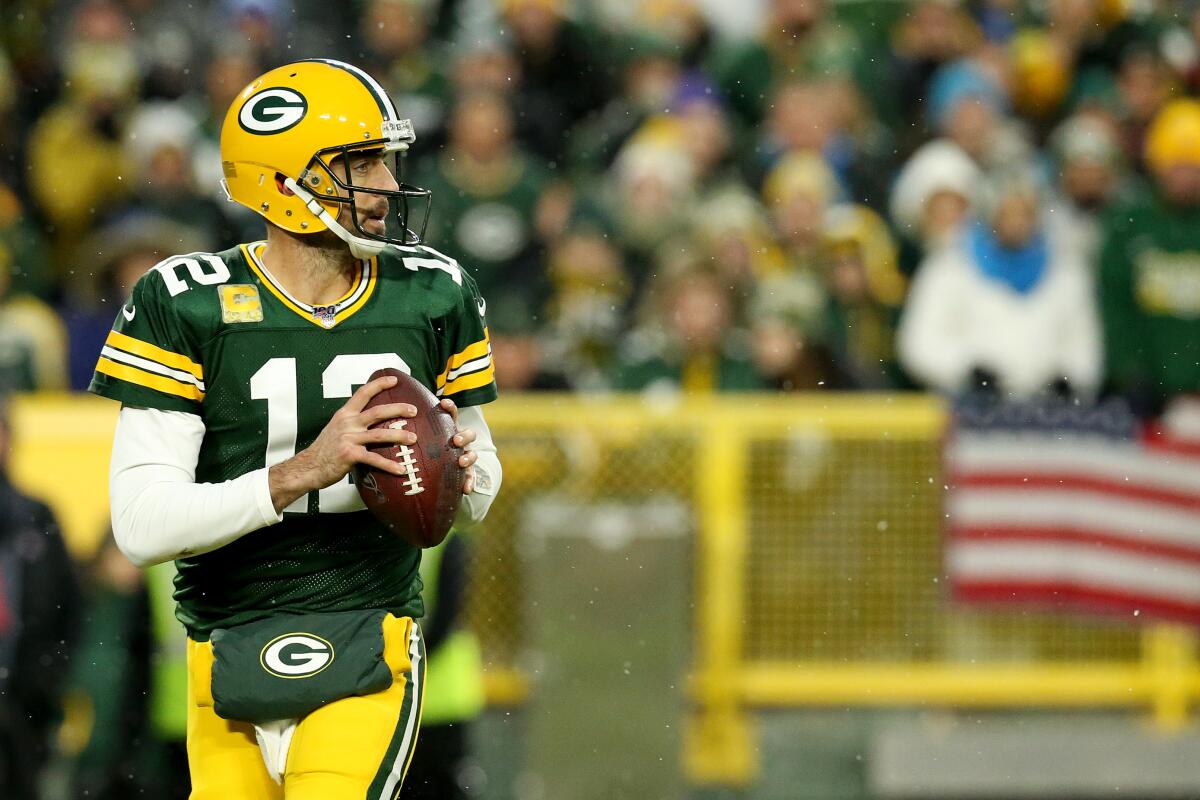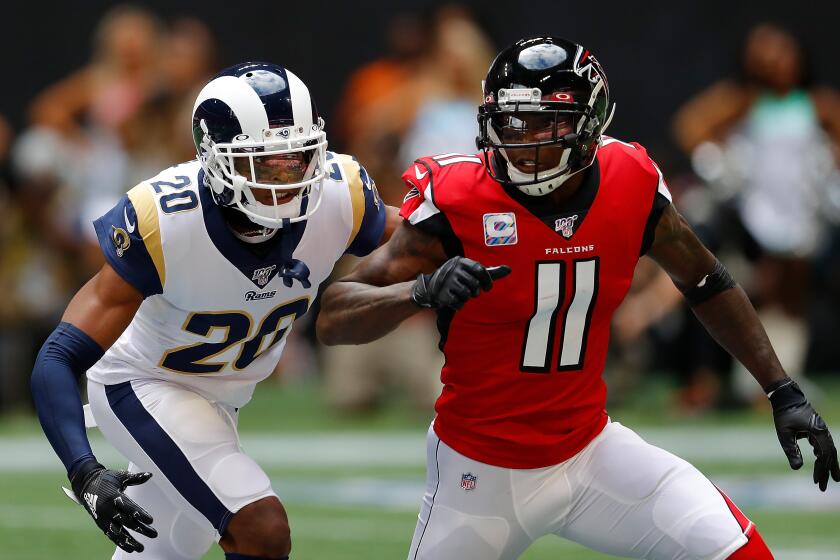Ask Sam Farmer: When a quarterback spikes the ball, does it count as an incompletion?

Have a question about the NFL? Ask Times NFL writer Sam Farmer, and he will answer as many as he can online and in the Sunday editions of the newspaper throughout the season. Email questions to: [email protected]
When a quarterback spikes the ball at the line of scrimmage to stop the clock, is that considered an incomplete pass? It seems like it is no different than a ball thrown out of bounds. Does the NFL keep stats on the number of spiked balls a quarterback throws?
Lindy Garrison, Downey
Farmer: A spike is considered an incomplete pass and is counted as such. Although number of spikes isn’t an official NFL statistic, there’s probably someone out there who counts them. Number crunchers tally virtually everything else.
Now, why isn’t that intentional grounding?
NFL rules say that a player under center “is permitted to stop the game clock legally to save time if, immediately upon receiving the snap, he begins a continuous throwing motion and throws the ball directly into the ground.”
However, if that player delays that spike for strategic purposes, including dropping back at all, it is intentional grounding even if he is not under pressure from pass rushers.
Jalen Ramsey has shown off his coverage skills since the Rams acquired him, but against the Ravens on Monday he’ll need to help contain the NFL’s No. 1 running game.
::
Early this season, I saw on TV a football player being told to leave the field by a referee, because his plastic facemask visor was tinted from its clear color. However, since then I have seen multiple players with visors of various colors being allowed to play. Is there a rule against this or not?
Linny Smith, Indian Wells
Farmer: This is an interesting topic, and one I learned more about last Sunday when I spent a full day with the Rams’ equipment staff. Whereas it’s against league rules to play with visors that are anything but clear or very lightly tinted, a lot of players like to wear the dark or reflective visors during warmups and/or during the week of practice. There’s the sunglasses effect, yes, but don’t underestimate the appeal of simply looking cool.
Equipment workers can easily add or remove those visors to helmets, so they get their fair share of players who make those requests before games. The caveat is, those visors need to be removed before kickoff, or swapped out for more transparent ones.
The NFL banned tinted visors in 1998 for safety reasons. Nightmare scenario: a player is knocked unconscious, but medical staff can’t see his eyes without removing his helmet. It’s now easy to remove a visor without taking off the helmet.
There are rare medical exceptions that allow players to wear dark-tinted visors, however. According to a Sports Illustrated report, 14 players were granted those exceptions before this season.
::
The Rams had a touchdown called back last Sunday for an illegal formation. Apparently, Andrew Whitworth, the left tackle, was left “uncovered.” What does that even mean? What’s the purpose of that particular rule?
Dave Stuart, Westlake Village
Farmer: The term “covered” tends to throw people, because it has a more common definition in football, as in a defensive player covering a receiver. In this case it means Whitworth didn’t have an eligible receiver lined up outside of him on the line of scrimmage, so he — as an offensive lineman who didn’t report as eligible — was the bookend on one side. That’s not legal, because it lures a defense into covering him as a potential receiver, even though he’s not legally eligible. In essence, it takes a defensive player out of play.
Let’s back up and look at what’s required. For a formation to be legal, it must have at least seven players on the line of scrimmage. In the most basic sense, that’s five offensive linemen and a receiver on each side. The outermost player on each side must be an eligible receiver.
Now, the Rams could have had an unbalanced line and made Whitworth eligible, but they would have had to relay that information to the referee, who then would announce it to everyone on the field (and watching).
Does that cover it?
More to Read
Go beyond the scoreboard
Get the latest on L.A.'s teams in the daily Sports Report newsletter.
You may occasionally receive promotional content from the Los Angeles Times.












